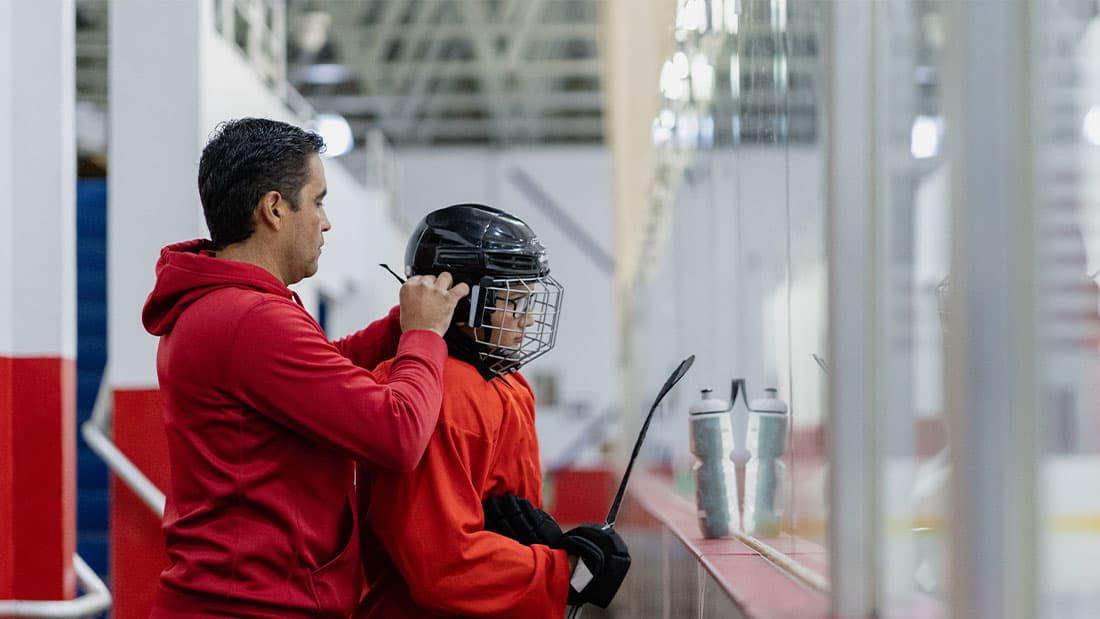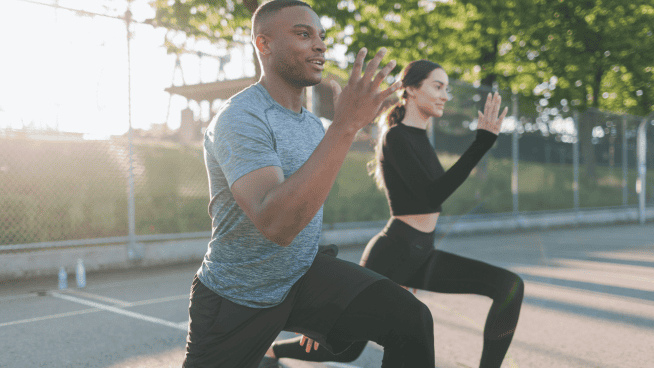How to Add Power to Your Serve and Groundstrokes
To become a top-ranked tennis player, you must have great athletic ability. Need proof? Just watch highlights from the 2012 Australian Open. These athletes possess tremendous amounts of skill, speed, stamina and power.
One aspect of tennis that has changed over the last 30 years is the power produced when hitting the ball. It’s true that technology and the physical size of players have contributed to the increase, but advanced training programs specifically designed for tennis have also facilitated a more powerful game.
You need to produce rotational power for both your serve and your groundstrokes. You must be able to produce this power from a multitude of different stances on your forehand and backhand, and when preparation time is short, you need reactive speed.
One great way to increase rotational power and reactive speed is with medicine balls. Below, I provide several med ball exercises that will assist you in developing power in your serve and groundstokes. I also outline a progression for these exercises, so you can transfer them from the training room to the court.
There are a few important aspects you must take into consideration when performing these exercises:
- Use a solid wall when performing the throws
- Keep repetitions low to maintain peak velocity
- Allow for full recovery with two-minute rest periods
- Select a properly weighted med ball that won’t slow you down or force you to use improper form
- Use light weight at first to learn proper technique and progress as you become stronger
- You must perform the exercises quickly to gain the benefits, but beware that poor technique can cause injury
Overhead Med Ball Slam
This power exercise will help you develop a more powerful serve.
- Assume athletic stance
- Hold med ball with both hands in front at waist
- Raise ball using shoulders and legs
- Come overhead with ball as high as possible; heels should come off ground
- Slam ball into ground
Sets/Reps: 1×6-8
Open Stance Med Ball Rotational Throw
Most serves and returns are performed with an open stance. This med ball exercise simulates that movement.
- Assume athletic stance, standing three to five feet away from wall
- Facing wall, hold med ball with both hands in front at waist
- Move ball next to right hip and rotate shoulders
- Drive forcefully with right hip and throw ball against wall as hard as possible
- Catch ball off wall; repeat for reps
- Perform set on left side
Sets/Reps: 1×6-8 per side
Closed Stance Med Ball Rotational Throw
This variation of the Med Ball Rotational Throw prepares you to react to even more scenarios on the court.
- Assume athletic stance with wall three to five feet away and on left side
- Hold med ball with both hands in front at waist
- Move ball next to right hip and rotate shoulders
- Drive forcefully with right hip and throw ball against wall as hard as possible
- Catch ball off wall; repeat for reps
- Assume stance on right side and perform set
Sets/Reps: 1×6-8 per side
Moving Med Ball Throws
This advances the previous exercises to the court, mimicking a tennis match even more.
- Begin at center mark on tennis court
- Hold med ball and perform split step
- Shuffle two to three steps to left or right
- Perform Closed or Open Stance Med Ball Throw
- Perform same footwork as for groundstroke
- Use exercise for both forehand and backhand motions
Sets/Reps: 1×6-8
Med Ball Catch and Throws
This most difficult med ball exercise brings it all together. On the court, you never know where the ball is going, but you need to be ready to deliver a powerful return. This final exercise does just that.
- Have coach or teammate throw ball to left or right of you
- Catch it and then perform Closed or Open Stance Med Ball Throw
- Perform down line and cross court groundstoke patterns
- Perform same footwork as for groundstroke
- Can be performed all to one side, in alternating format or random patterns
Sets/Reps: 1×6-8 per side (if relevant)
Always pay attention to your mechanics—footwork, speed and balance. Incorporating these exercises into your workout will help you develop rotational power and reduce the risk of injury.
Photo: nytimes.com
Dean Hollingworth, CSCS, has extensive experience working with athletes of all ages, helping them develop speed, agility and strength. He has consulted with various amateur and professional organizations as a fitness specialist for tennis, hockey, gymnastics and football; and his involvement has directly contributed to athletes’ performance both on and off the field.
RECOMMENDED FOR YOU
MOST POPULAR
How to Add Power to Your Serve and Groundstrokes
To become a top-ranked tennis player, you must have great athletic ability. Need proof? Just watch highlights from the 2012 Australian Open. These athletes possess tremendous amounts of skill, speed, stamina and power.
One aspect of tennis that has changed over the last 30 years is the power produced when hitting the ball. It’s true that technology and the physical size of players have contributed to the increase, but advanced training programs specifically designed for tennis have also facilitated a more powerful game.
You need to produce rotational power for both your serve and your groundstrokes. You must be able to produce this power from a multitude of different stances on your forehand and backhand, and when preparation time is short, you need reactive speed.
One great way to increase rotational power and reactive speed is with medicine balls. Below, I provide several med ball exercises that will assist you in developing power in your serve and groundstokes. I also outline a progression for these exercises, so you can transfer them from the training room to the court.
There are a few important aspects you must take into consideration when performing these exercises:
- Use a solid wall when performing the throws
- Keep repetitions low to maintain peak velocity
- Allow for full recovery with two-minute rest periods
- Select a properly weighted med ball that won’t slow you down or force you to use improper form
- Use light weight at first to learn proper technique and progress as you become stronger
- You must perform the exercises quickly to gain the benefits, but beware that poor technique can cause injury
Overhead Med Ball Slam
This power exercise will help you develop a more powerful serve.
- Assume athletic stance
- Hold med ball with both hands in front at waist
- Raise ball using shoulders and legs
- Come overhead with ball as high as possible; heels should come off ground
- Slam ball into ground
Sets/Reps: 1×6-8
Open Stance Med Ball Rotational Throw
Most serves and returns are performed with an open stance. This med ball exercise simulates that movement.
- Assume athletic stance, standing three to five feet away from wall
- Facing wall, hold med ball with both hands in front at waist
- Move ball next to right hip and rotate shoulders
- Drive forcefully with right hip and throw ball against wall as hard as possible
- Catch ball off wall; repeat for reps
- Perform set on left side
Sets/Reps: 1×6-8 per side
Closed Stance Med Ball Rotational Throw
This variation of the Med Ball Rotational Throw prepares you to react to even more scenarios on the court.
- Assume athletic stance with wall three to five feet away and on left side
- Hold med ball with both hands in front at waist
- Move ball next to right hip and rotate shoulders
- Drive forcefully with right hip and throw ball against wall as hard as possible
- Catch ball off wall; repeat for reps
- Assume stance on right side and perform set
Sets/Reps: 1×6-8 per side
Moving Med Ball Throws
This advances the previous exercises to the court, mimicking a tennis match even more.
- Begin at center mark on tennis court
- Hold med ball and perform split step
- Shuffle two to three steps to left or right
- Perform Closed or Open Stance Med Ball Throw
- Perform same footwork as for groundstroke
- Use exercise for both forehand and backhand motions
Sets/Reps: 1×6-8
Med Ball Catch and Throws
This most difficult med ball exercise brings it all together. On the court, you never know where the ball is going, but you need to be ready to deliver a powerful return. This final exercise does just that.
- Have coach or teammate throw ball to left or right of you
- Catch it and then perform Closed or Open Stance Med Ball Throw
- Perform down line and cross court groundstoke patterns
- Perform same footwork as for groundstroke
- Can be performed all to one side, in alternating format or random patterns
Sets/Reps: 1×6-8 per side (if relevant)
Always pay attention to your mechanics—footwork, speed and balance. Incorporating these exercises into your workout will help you develop rotational power and reduce the risk of injury.
Photo: nytimes.com
Dean Hollingworth, CSCS, has extensive experience working with athletes of all ages, helping them develop speed, agility and strength. He has consulted with various amateur and professional organizations as a fitness specialist for tennis, hockey, gymnastics and football; and his involvement has directly contributed to athletes’ performance both on and off the field.
















